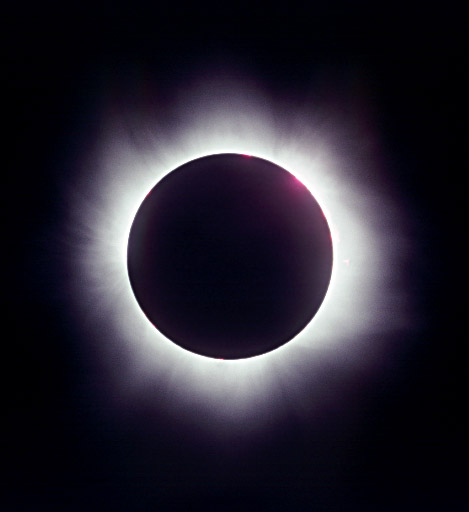
|
| Date: | 11.08.1999 | Time: | 9:31 UT | Exposure: | 2s |
|---|---|---|---|---|---|
| Field of View: | 1.2o x 1.3o | Receiver: | Kodachrome 64 | Filter: | none |
| Instrument: | f=1000mm, 1/10 | Place: | Altroff, France | Observer: | Till Credner |
During the total phase of a solar eclipse the extended corona of the sun becomes visible even to the unaided naked eye. This outer atmosphere is consisting of highly ionized gas at temperatures in the order of one to five million degrees. The dominant light source is light from the sun's disk that is scattered by free electrons of the corona (Thomson scattering). But also emission lines of heavy elements contribute substantially to the spectrum, for example Fe, Co, Ni and Ca. The observed radial coronal rays are regions with higher ion densities and represent the direction of the magnetic field lines.
More images of the solar eclipse 8/99
Reference:
A. Unsöld, Physik der Sternatmosphären, Springer Verlag